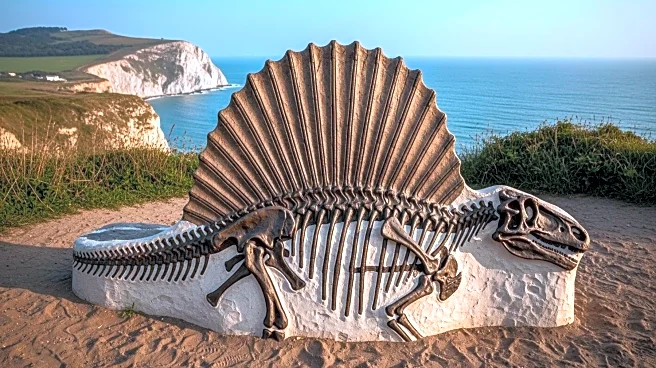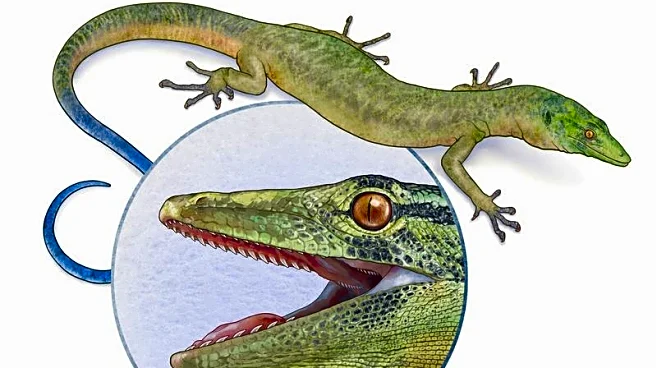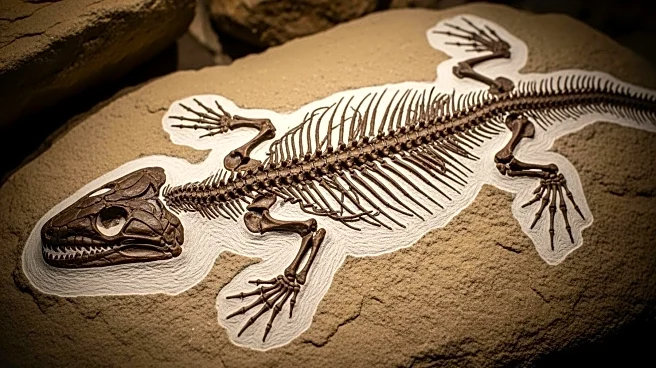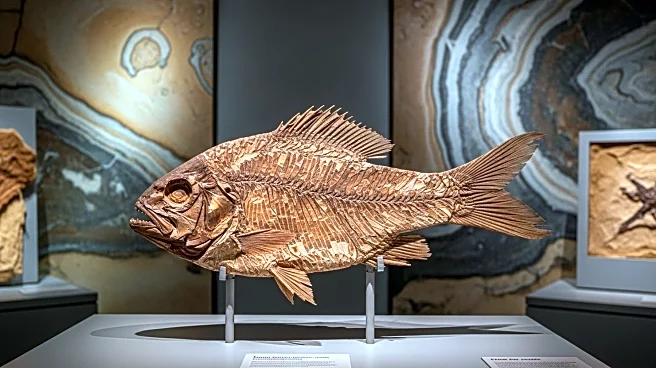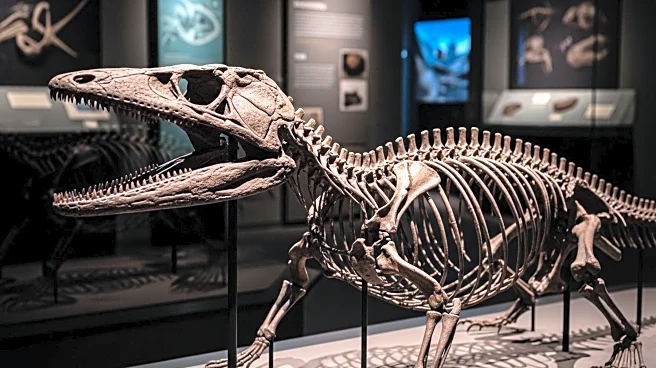What's Happening?
Scientists have uncovered a new dinosaur species, Istiorachis macarthurae, on England's Isle of Wight. This herbivorous dinosaur is notable for its sail-like structure along its back and tail, which is believed to have played a role in social signaling. The fossils, which had been stored in a museum for decades, were re-examined by Jeremy Lockwood, leading to the identification of this unique species. The sail-like structure is thought to have been used for visual display, possibly for attracting mates or establishing dominance within its species.
Why It's Important?
The discovery of Istiorachis macarthurae provides new insights into the social behaviors of dinosaurs, particularly herbivores. Understanding the function of the sail-like structure can help scientists learn more about the evolutionary pressures that shaped dinosaur species. This finding highlights the importance of social signals in the animal kingdom and may influence future research on dinosaur behavior and evolution. The study also underscores the value of re-examining existing fossil collections, which can lead to significant scientific breakthroughs.

